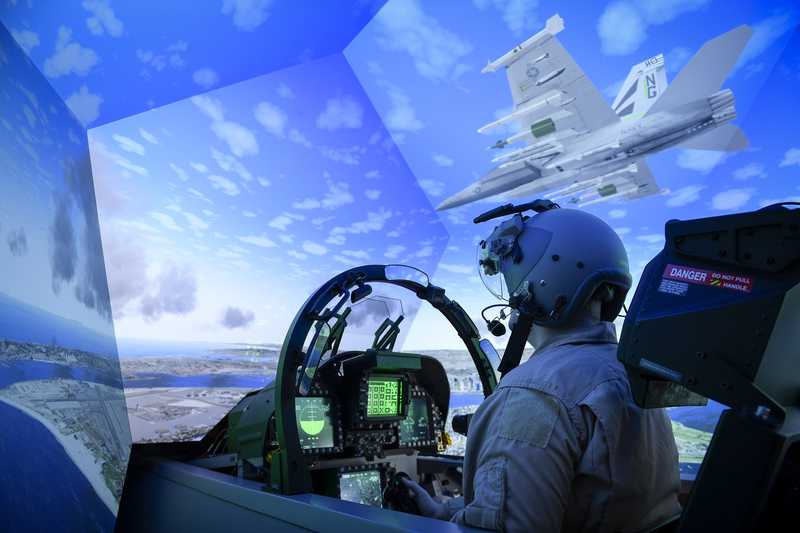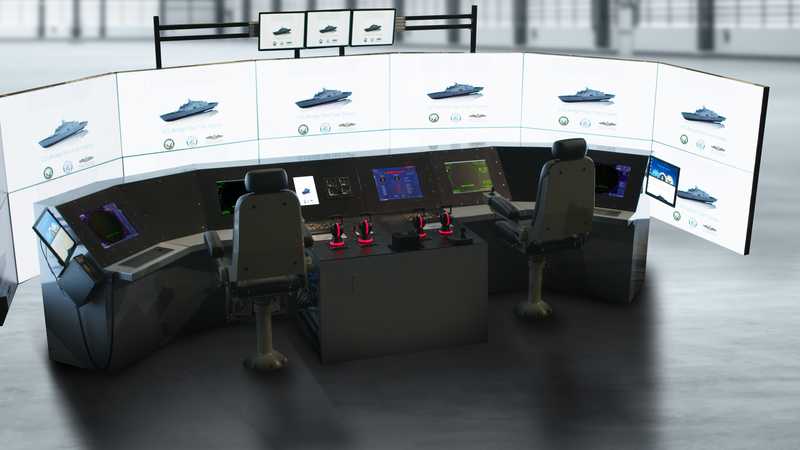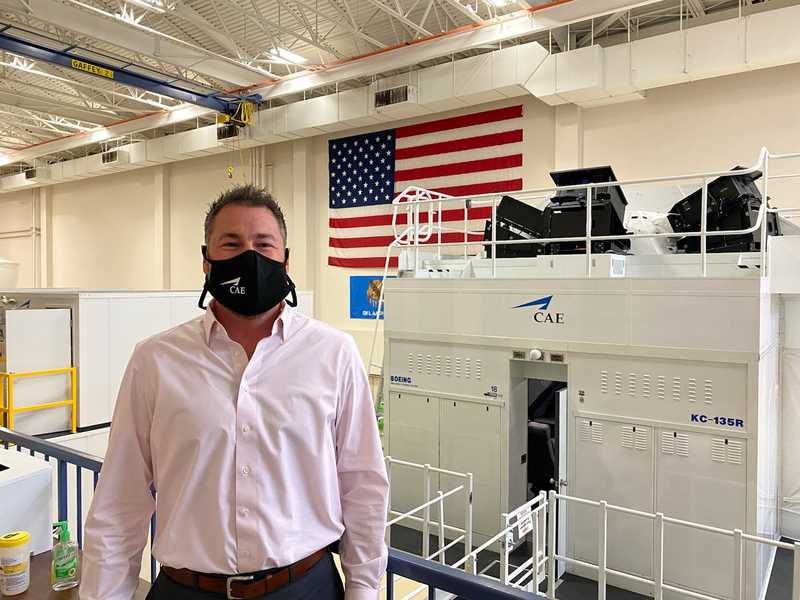Joining forces: CAE and L3Harris Military Training (Sponsored)
This article is brought to you by CAE.
It was nearly a century ago that Edwin Link invented the ubiquitous Link Fight Trainer, or “Blue Box”, the ground-breaking pilot trainer that arguably helped pave the way for allied victory in World War II. More than 500,000 allied pilots trained on the Link trainers, the pioneering predecessor to the flight simulators we know today.
Following in the footsteps of Link’s success came a fellow giant in the simulation and training world, Luther Simjian, a life-long inventor who, as well as inventing the ATM, founded Reflectone in 1939. During the Second World War, the company pioneered and developed state-of-the-art training equipment for aviators.
Last but not least, in 1947 Ken Patrick, an ex-Royal Canadian Air Force officer, founded Canadian Aviation Electronics, now simply known as CAE. Initially, the company focused on the repair and overhaul of communications equipment and then irreversibly entered the simulator business in 1952 after winning a contract from the Royal Canadian Air Force to provide flight simulators for the Avro Canada CF-100 Canuk.
These three pioneers started the companies that have collectively accumulated nearly 250 years of simulation and training experience, but their legacy is not over. Rather, their work is now being synchronised in a way not seen before, future-proofing a near quarter millennia that these three pioneers contributed to the simulation industry.
Founders of simulation

For the first time in the history of the training and simulation industry, the legacy of all three trailblazers now sit under one roof.
This began in 2001 when CAE purchased Reflectone, which BAE Systems owned at the time. Fast forward another 20 years and CAE’s largest acquisition ever – acquiring L3Harris’ Military Training business in 2021 – has brought the legacy Link under the CAE family once again.
“I take pride that we’re standing on the shoulders of giants. CAE Defense and Security is going to honour that legacy and continue to move forward as the only global, pure play, platform-agnostic training and simulation provider in the world,” said Dan Gelston, Group President, Defense & Security, CAE. “Recognizing history helps an organization better understand the present and prepare for the future. CAE’s combined history of innovation will help us deliver on the training required for today’s mission, while advancing the capabilities to prepare for tomorrow’s fight.”
This legacy also helps set CAE apart from competitors, boosting its already market-leading portfolio of training and simulation solutions. Training and simulation runs through CAE’s DNA – it’s our “raison d'être” -- and this focus positions CAE well for the company’s future.
The acquisition of L3Harris’ Military Training business, including Link and Doss Aviation, is highly complementary to what CAE already offers, as each of the company’s portfolios supplement that of the other, delivering critical mass within key target markets.
For example, in the air domain, CAE has a significant pedigree of experience in transport and tanker aircraft, while Link is a leader on fighter and bomber platforms. In the maritime domain, CAE specialises in surface ship training while Link brings subsurface training experience.
Additionally, Link focused primarily on the United States market and US foreign military sales while CAE was a global-oriented company with a significant footprint in many countries around the world. This established international presence will help CAE leverage the insertion of new technologies from Link into these markets.
“With this acquisition, we identified a unique opportunity, one that accelerated our strategy and incorporated a company that is highly complementary yet similar in culture, which was very important to us,” Gelston added.
Shaping the future

Looking to the future, there are a wealth of opportunities in defence and security for CAE as it looks to leverage its new and expanded strengths for its customers.
The acquisition has accelerated CAE’s presence in the vitally important U.S. market, doubling its size and making the company the largest platform-agnostic provider of training and simulation solutions.
The additional capabilities and platform experience also bolster CAE’s already strong international presence. There are significant opportunities in Canada, Europe, the Middle East and Indo-Pacific – all markets where CAE has a strong and established footprint.
It is CAE’s customer-focused training and simulation solutions - as well as its application of new disruptive technologies - that makes it a key contender in these markets.
This includes preparing defence and security forces for emerging threats, including near-peer adversaries that are at the forefront of strategic concern, as well as the pervasive threat of terrorism and asymmetric warfare that has defined much of the 21st century.
The integration of all of CAE’s capabilities and adoption of new technologies will be the facilitator of this success, in particular, CAE’s focus on enabling integrated multi-domain training incorporating full digital immersion that will increase customer’s access to high-fidelity synthetic environments.

“The future is not just more training in simulators, but more training in synthetic environments,” Gelston noted. “The scale and complexity of multi-domain operations combined with time and cost considerations dictates the need for doing more in the virtual world.”
He adds it is no longer one platform and one domain in which operators need to conduct training. Instead, it must be a coordinated effort across multiple platforms, battlespaces and domains, and synthetic training is crucial to that.
“That’s why I’m excited about the [Link] acquisition, building on the legacy of our simulation and training founders that paved the way for where CAE is today,” Gelston added.
“As you look at our modelling and simulation experience and expertise, I think we have solidified our position as a company capable of helping our customers prepare for any fight they may face in the future.”
More from Industry Spotlights
-
![The power of partnership: GDMS–UK deepens cooperation with the British Army]()
The power of partnership: GDMS–UK deepens cooperation with the British Army
In Conversation: Shephard's Gerrard Cowan talks to General Dynamics Mission Systems–United Kingdom’s Chris Burrows about how the company's UK TacCIS business is reshaping battlefield communications through sustained customer engagement, accelerated innovation and ecosystem collaboration.
-
![Expanded focus – unleashing the potential of commercial SATCOM for defence]()
Expanded focus – unleashing the potential of commercial SATCOM for defence
In conversation... Intelsat's Ray Lindenmayer talks to Shephard's Gerrard Cowan about the new capabilities advanced commercial SATCOM technologies can provide for military customers, and how industry and government can best work together to achieve maximum effect in orbit.
-
![Enhancing education: How CAE is embracing new technology to boost military training]()
Enhancing education: How CAE is embracing new technology to boost military training
In Conversation... Shephard's Gerrard Cowan talks to CAE's Marc-Olivier Sabourin about how the training and simulation industry can help militaries achieve essential levels of readiness by leveraging new technology, innovative procurement methods and a truly collaborative approach.
-
![Why tactical UAVs are winning on the future battlefield (Podcast)]()
Why tactical UAVs are winning on the future battlefield (Podcast)
In Conversation: In this special edition of the Shephard Defence Podcast, Tony Skinner sits down with Dan Slasky, President and CEO of Aeronautics, to explore how cutting-edge tactical unmanned aerial systems are reshaping today’s battlefields.
-
![Fincantieri’s Vulcano Class: a new era of versatility and innovation in naval operations]()
Fincantieri’s Vulcano Class: a new era of versatility and innovation in naval operations
Logistic support ships (LSS) are essential for sustained naval operations, especially during extended deployments far from home ports.
-
![Need more flexibility in battle management system delivery?]()
Need more flexibility in battle management system delivery?
Systematic’s newest solution, SitaWare BattleCloud, brings greater flexibility to combat information systems and C4ISR.

























